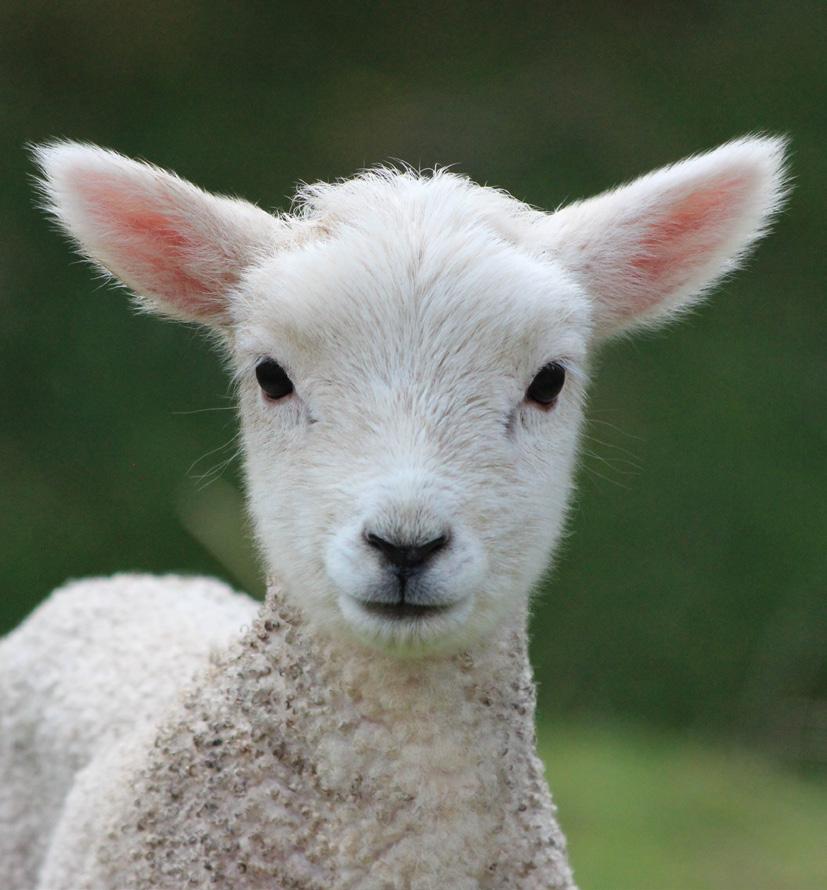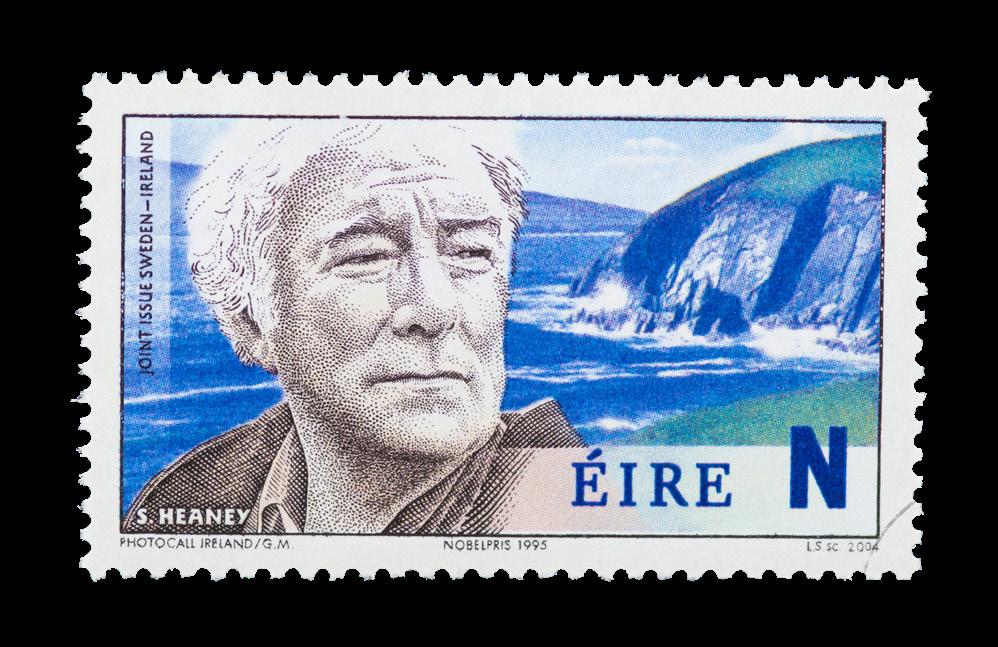
11 minute read
Topic 7 | Non-Literary Texts
Tone/mood The tone of the poem is the attitude of the poet towards the subject matter, e.g., is the poem trying to convey happiness, anger, sadness, etc? The tone may alter over the course of the poem. Mood is very similar to tone, it also focuses on the atmosphere of the poem. The key difference is that mood is based on the perspective of the reader and how they are made to feel.
Rhythm You are unlikely to get a full question on rhythm, but it’s definitely worth including in any question on language or structure. The rhythm of a poem is its pace, e.g., does it flow easily or is it deliberately disjointed to support an uncomfortable subject matter? • Lack of punctuation creates a fast pace for a poem, while excessive use of punctuation gives the poem a stop-and-start quality. • The rhythm of the poem can be measured by beats and end rhyme structures, such as abab or aabb. • Enjambment is when you have run-on lines in a poem, e.g., when one stanza runs into the next stanza in mid-sentence. This metre gives the poem a sense of momentum. 6.2 Sample Question A Read the following poem by Paul Durcan and answer the questions that follow. Caught Out Face to face with a lamb On a Spring evening at twilight I have nowhere to hideSAMPLE
Black legs, black ears,
White baby-grow,
Two black eyes peer up at me
I feel as guilty
As if caught out by my grand-daughter
Telling her a lie.
Question 1 Do you find the poet’s reaction to the lamb in this poem surprising? Explain your answer with reference to the poem. (10 marks)
Sample Answer 1 – 5/10 marks Yes, I did actually, lambs aren’t intimidating creatures, you don’t need to have somewhere to hide from them, I mean at the end of the day, what can a lamb do to hurt you? I think the poet’s reaction is way over the top and completely unjustified. He feels guilty because he is probably about to slaughter the lamb, that’s obviously the only reason he’s there and he feels bad about killing it. Sample Answer 2 – 10/10 marks Paul Durcan’s reaction to the lamb was not surprising to me in the least. One associates newborn spring lambs with innocence, purity, and fresh beginnings - so much so that the lamb evokes feelings of his young grand-daughter and of being caught out in a lie to her. What this suggests to me is that he feels disingenuous* standing in front of the carefree lamb. This could possibly be explained by the fact that perhaps he eats meat and knows what the baby animal tastes like. This leads to feelings of guilt and discomfort standing there in front of the lamb. “I felt as guilty as if caught out by my grand-daughter telling her a lie.” In this context, the poet’s reaction makes perfect sense.
Introductory sentence should make reference to the question for context. Point not explained and no evidence given. An assumption is made here without any evidence. Opening relates to question and gives a strong opinion. Point developed and explained. Personal opinion given and supported. SAMPLE Quote given as evidence to support the point. Closing sentence relates the point back to the question.
*disingenuous = not honest or sincere
6.3 Sample Question B
Do you think Paul Durcan uses language effectively in his poem, ‘Caught Out’? Explain your answer with reference to any two examples chosen from the poem. (15 marks)
Sample Answer 1 – 7/15 marks Yes, Paul Durcan does use language effectively in the poem. The language he uses is simple and I am able to understand all of it. This is not what you expect from poetry, you expect old, difficult language in a tight structured manner and that’s not what this was, therefore I was able to relate to it more. In other ways I don’t think the poet uses language very effectively in the poem. It didn’t really hold my interest and I found it a bit boring, to be honest. Whilst I knew all the words, I was completely confused as to why he would feel guilty about meeting a lamb for the first time. What has he to feel guilty about? In fairness, he hasn’t done anything to the lamb. His ideas could have been clearer.
No example given to illustrate the point (and not the strongest point to use). This does not explain how they were able to relate to the language. If you critique the poem, you must provide a reason and evidence. This is not relevant to the question, which is about language. SAMPLE
Sample Answer 2 – 15/15 marks Language features are used brilliantly in this poem. The simile “I felt as guilty as if caught out by my grand-daughter telling her a lie” compares the guilt he feels at facing this spring lamb to the guilt he would feel at lying to his innocent granddaughter. This illustrates his discomfort in this seemingly innocuous* moment. Durcan uses alliteration in the second stanza when he writes “black legs, black ears, white baby grow, two black eyes”. This repetition of the ‘b’ sound gives the poem pace and a sense of urgency to reflect his heightened anxiety in this moment. Durcan also uses run-on lines to give the poem a sense of flow. In the first stanza, he says, “Face to face with a lamb / On a spring evening...” This gives the poem an informal, stream-of-consciousness style, allowing us to be thrust along with the poet’s seemingly meandering thoughts. I feel the language features in the poem effectively support the subject matter working in perfect synchrony.
Strong opening which doesn’t just repeat the exact wording of the question. The effectiveness of the simile is discussed. Clear point developed with a quote from the poem as evidence. Another clear language feature identified and explained. Closing sentence refers back to the question. *innocuous = harmlessSAMPLE
6.4 Sample Question C
Complete the table below by matching the poetic terms to the most appropriate line of verse. The first one has been done for you. (Use each word only once.) (5 marks)
Alliteration Onomatopoeia Hyperbole Metaphor Assonance Simile
Sample Answer 1 – An answer that would be awarded 5/5 marks A tap at the pane, the quick sharp scratch… Onomatopoeia What happens to a dream deferred? Does it dry up Like a raisin in the sun?
Simile The fair breeze blew, the white foam flew, The furrow followed free…
Alliteration All the world’s a stage players. , and all the men and women merely Metaphor And a river of green is sliding unseen beneath the trees… Assonance But I would walk 500 miles, And I would walk 500 more, Just to be the man who walks a 1,000 miles to fall down at your door.
SAMPLE Hyperbole
Topic 6 6.5 Sample Question D
Read the following poem by Seamus Heaney and answer the following question.
Lovers on Aran
The timeless waves, bright, sifting, broken glass, Came dazzling around, into the rocks, Came glinting, sifting from the Americas To possess Aran. Or did Aran rush to throw wide arms of rock around a tide That yielded with an ebb, with a soft crash? Did sea define the land or land the sea? Each drew new meaning from the waves’ collision. Sea broke on land full identity.SAMPLE


Identify a line or phrase in the poem where the poet uses each of the poetic techniques in the table below and explain why you think the poet uses the technique. (20 marks)
Sample Answer – 20/20 marks
Contrast The line “Did sea define the land or land the sea?”offers us a contrast between the solidity of land and the fluidity of water. It seems suggestive of a continual battle for ascendency*. Personification We see Heaney bring the rock to life when he says, “wide arms of rock around a tide that yielded with an ebb”. This shows the landscape embracing the water and seemingly calming it. The use of the term “wide arms” gives it a nurturing, protective feel. Tone There is a restless tone to this poem. This is best exemplified by “The timeless waves, bright, sifting, broken glass”. The sense here of the relentless waves breaking and crashing into the coastline is suggestive of some element of tumult** and torment. Assonance There are numerous examples of assonance in the poem such as 'glinting'/'sifting', 'wide'/'tide', and 'drew'/'new'. These serve to give the poem a sense of flow and rhythm replicating the movement of the ocean.
These responses answer the question fully: they give examples of the techniques used and explain their effect and why they’re used. They express opinions and give evidence to support them.SAMPLE *ascendency = power and control **tumult = confusion and disorder
Enjambment The run-on line of “Or did Aran rush / to throw wide arms of rock around a tide” is a blatant example of where Heaney wants you to get caught up in the flow and movement of the poem. He doesn’t want you distracted by poetic convention but carried by the emotion and pace of the poem. To do so, he takes everything out of your way for a continued reading.
Topic 6 6.6 Sample Question E
What do you think is the message in this poem? Explain your answer. (10 marks)
Sample Answer 1 – 6/10 marks The message of this poem is the power of nature. It shows the waves crashing into the rocks of Ireland, having come all the way from America. This shows the tireless nature of the waves, illustrating the inexhaustive power of nature. It’s asking which is more powerful, the land or the sea, who is going the win the longstanding battle as waves crash into the coastline. There is a suggestion at the end that they complement each other and are best off working in synchrony. This is seen when Heaney says, “Sea broke on land to full identity”. This suggests to me that the land and the ocean are fully themselves when they are in connection with each other. Sample Answer 2 – 10/10 marks This whole poem is a conceit* on the power dynamics of a relationship. Two lovers are represented by the ocean and the land. On the coastline, the elemental force of the sea meets the steadfast landscape. The waves seem powerful initially, like “broken glass” tumbling “into the rocks”. The sea wishes to “possess” the land. However, it yields to a “soft crash” when the “wide arms of rock” receive it welcomingly. There seems to be some debate over which is victorious in this collision: “did sea define land or land the sea”. However, the poet reflects that they are both only fully realised (“full identity”) when they are in contact with each other. To me, this suggests an argument was about to flare up, but it was diffused by the calmness of one of the lovers. Their initial thoughts of who won the fight were reframed into how they are extensions of each other, so much better together than when they are apart. The message of this poem is one of empathy and connection.
This answer misses something important. This poem is an extended metaphor about the relationship between two lovers. If this is not referred to, the poem has not been sufficiently interpreted for top marks. This response recognises that the poem is a conceit; a symbol representing a relationship where there is some conflict and resolution. Quotations are used to support the points being made. SAMPLE A personal response is given. The poem is interpreted and discussed. Concluding sentence brings the response directly back to the question.
6.7 Sample Question F
Evaluate how one of the poetic techniques named in Sample Question D of this section helps to convey the message you have identified in the poem. (10 marks)
Sample Answer 1 – 6/10 marks Heaney’s use of personification in this poem, when he says “throw wide arms of rock around a tide”, conveys the message of empathy. We picture a scene where the waves are getting ready to crash against the rocks in a violent way reflecting a stormy relationship. The embrace of the rocks like wide arms suggests a hug. Picturing the rocks hugging the sea and calming it down is a good representation of a caring relationship.
This response is a little short for full marks and should include more than one quotation. The answer should elaborate more on the relationship between land and sea and relate it back to the question.SAMPLE

Sample Answer 2 – 10/10 marks The message of this poem is connection: connection of land and water, reflecting a connection between two individuals. Contrast is used very effectively in this poem to illustrate this theme.
Clear context is given to start the response, in relation to the question asked.
The contrast of the fluidity of the water colliding with the hard rocks reflects a battle of two very different elements, i.e., two very different people. We expect to see a crash against the sharp rocks from the “dazzling… glinting” waves, instead we see a surrender into the “wide arms” of the embracing rocks. Metaphorically, this seems to suggest elevated moods have been averted and a compromise has been found through compassion. Cleverly, this contrasts with our expectations for this scene. We expect to see a battle between two powerful forces, but instead we see co-existence, which of course relates to love and exhibiting emotional maturity. This poem demonstrates that land and water are eternally connected, despite their contrasting roles and characteristics. This is a symbol for successful relationships involving strikingly different people. The poem uses contrast to emphasise the theme of connection: bodies of water and land connected, lovers connected in spite of, or maybe even because of, their contrasting characteristics.
Concluding sentence relates the response back to the question asked by briefly summarising the points. The response is structured into three points on contrast. Each is a separate paragraph and is supported with evidence.SAMPLE


